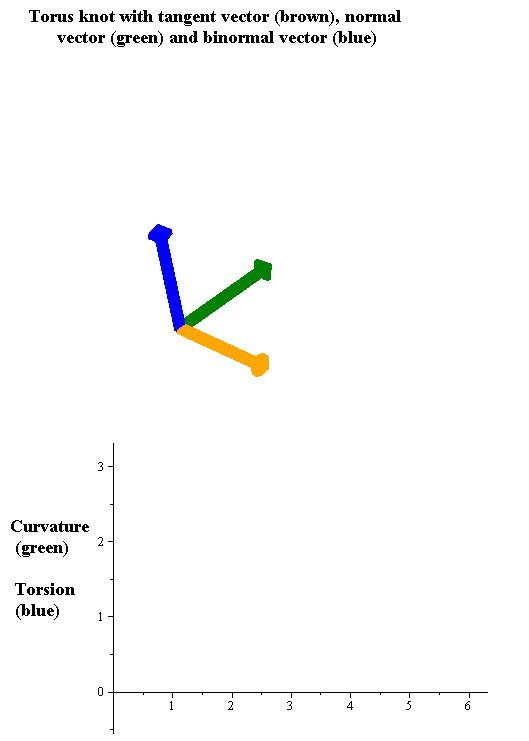 | ||
In the elementary differential geometry of curves in three dimensions, the torsion of a curve measures how sharply it is twisting out of the plane of curvature. Taken together, the curvature and the torsion of a space curve are analogous to the curvature of a plane curve. For example, they are coefficients in the system of differential equations for the Frenet frame given by the Frenet–Serret formulas.
Contents
Definition
Let C be a space curve parametrized by arc length
where the prime denotes the derivative of the vector with respect to the parameter
which means
Remark: The derivative of the binormal vector is perpendicular to both the binormal and the tangent, hence it has to be proportional to the principal normal vector. The negative sign is simply a matter of convention: it is a by-product of the historical development of the subject.
The radius of torsion, often denoted by σ, is defined as
Geometric relevance: The torsion
Properties
Alternative description
Let r = r(t) be the parametric equation of a space curve. Assume that this is a regular parametrization and that the curvature of the curve does not vanish. Analytically, r(t) is a three times differentiable function of t with values in R3 and the vectors
are linearly independent.
Then the torsion can be computed from the following formula:
Here the primes denote the derivatives with respect to t and the cross denotes the cross product. For r = (x, y, z), the formula in components is
